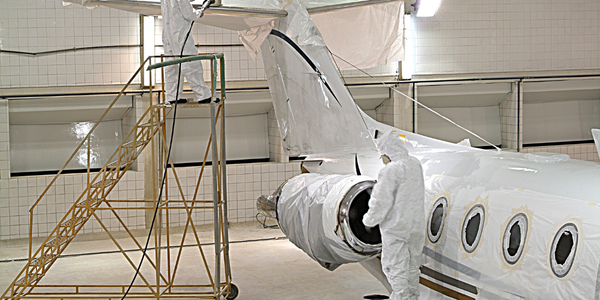公司规模
SME
地区
- America
国家
- United States
产品
- ICONICS’ GENESIS32™
- GraphWorX™32
- TrendWorX™32
- AlarmWorX™32
- ICONICS ReportWorX
技术栈
- PLC-based control systems
- OPC standard
实施规模
- Enterprise-wide Deployment
影响指标
- Productivity Improvements
- Digital Expertise
技术
- 平台即服务 (PaaS) - 应用开发平台
适用行业
- 药品
- 医疗保健和医院
- 航天
适用功能
- 离散制造
- 质量保证
用例
- 过程控制与优化
- 预测性维护
服务
- 系统集成
- 软件设计与工程服务
关于客户
Thermo Systems is a company based in East Windsor, NJ with a branch office in Duquesne, PA. They are a leader in the design and installation of mission critical PLC-based control systems. They have particular expertise in the automation of validated pharmaceutical HVAC systems, utility systems, and validated manufacturing applications. Thermo Systems services customers throughout North America and overseas. With over 20 years of controls engineering experience, Thermo Systems has been a leader in the design and installation of mission critical control systems. They utilize the latest technology from manufacturers such as ICONICS and focus on interoperability using the OPC standard. Thermo Systems designs open architecture systems that ensure end user flexibility in expansion.
挑战
Thermo Systems is a leader in the design and installation of mission critical PLC-based control systems. They specialize in the automation of validated pharmaceutical HVAC systems, utility systems, and validated manufacturing applications. However, the controls market has changed over the past few years, creating an ever-growing demand for open, standardized, and reliable software systems. Thermo Systems needed a software solution that could meet these demands, provide a wide range of programs and features, and comply with the latest FDA regulations.
解决方案
After researching other software tools on the market, Thermo Systems selected ICONICS’ GENESIS32. This OPC-based software provides a non-proprietary, graphical front-end solution with unparalleled integration and a proven guaranteed migration path. ICONICS’ GENESIS32 has met and exceeded all of Thermo Systems’ graphical software requirements. Thermo Systems has implemented ICONICS’ GENESIS32™ (GraphWorX™32, TrendWorX™32, and AlarmWorX™32) as the software solution for a variety of control systems applications including the automation of pharmaceutical HVAC, industrial chiller plants, pharmaceutical manufacturing, hospital lab controls, and HVAC, as well as biopharmaceutical and aerospace facilities. Thermo Systems also deploys ICONICS ReportWorX to provide customers the easy-to-use, full-featured custom data reports. The ICONICS WebHMI™ solution has been deployed in many applications as a secure way to provide Internet and Intranet connectivity for several Thermo customers.
运营影响

Case Study missing?
Start adding your own!
Register with your work email and create a new case study profile for your business.
相关案例.

Case Study
Case Study: Pfizer
Pfizer’s high-performance computing software and systems for worldwide research and development support large-scale data analysis, research projects, clinical analytics, and modeling. Pfizer’s computing services are used across the spectrum of research and development efforts, from the deep biological understanding of disease to the design of safe, efficacious therapeutic agents.

Case Study
Airbus Soars with Wearable Technology
Building an Airbus aircraft involves complex manufacturing processes consisting of thousands of moving parts. Speed and accuracy are critical to business and competitive advantage. Improvements in both would have high impact on Airbus’ bottom line. Airbus wanted to help operators reduce the complexity of assembling cabin seats and decrease the time required to complete this task.

Case Study
Aircraft Predictive Maintenance and Workflow Optimization
First, aircraft manufacturer have trouble monitoring the health of aircraft systems with health prognostics and deliver predictive maintenance insights. Second, aircraft manufacturer wants a solution that can provide an in-context advisory and align job assignments to match technician experience and expertise.

Case Study
Hospital Inventory Management
The hospital supply chain team is responsible for ensuring that the right medical supplies are readily available to clinicians when and where needed, and to do so in the most efficient manner possible. However, many of the systems and processes in use at the cancer center for supply chain management were not best suited to support these goals. Barcoding technology, a commonly used method for inventory management of medical supplies, is labor intensive, time consuming, does not provide real-time visibility into inventory levels and can be prone to error. Consequently, the lack of accurate and real-time visibility into inventory levels across multiple supply rooms in multiple hospital facilities creates additional inefficiency in the system causing over-ordering, hoarding, and wasted supplies. Other sources of waste and cost were also identified as candidates for improvement. Existing systems and processes did not provide adequate security for high-cost inventory within the hospital, which was another driver of cost. A lack of visibility into expiration dates for supplies resulted in supplies being wasted due to past expiry dates. Storage of supplies was also a key consideration given the location of the cancer center’s facilities in a dense urban setting, where space is always at a premium. In order to address the challenges outlined above, the hospital sought a solution that would provide real-time inventory information with high levels of accuracy, reduce the level of manual effort required and enable data driven decision making to ensure that the right supplies were readily available to clinicians in the right location at the right time.

Case Study
Aerospace & Defense Case Study Airbus
For the development of its new wide-body aircraft, Airbus needed to ensure quality and consistency across all internal and external stakeholders. Airbus had many challenges including a very aggressive development schedule and the need to ramp up production quickly to satisfy their delivery commitments. The lack of communication extended design time and introduced errors that drove up costs.







